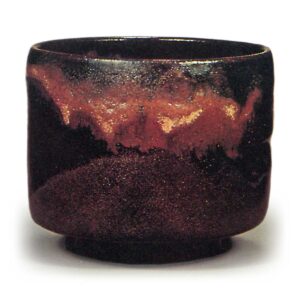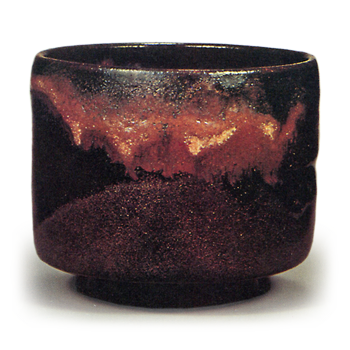
Tateno Pottery was located in Tateno under the Kagoshima Castle, and was founded in 1620 by Shimazu Iehisa at the bequest of his predecessor Yoshihiro, who invited Hoshiyama Shinji (Kinkai) from Kajiki (Kajiki Town, Aira County) to open the kiln. Nakaji founded the kiln together with Shin Chuseok (Tahara Yusuke) and Shin Takenobu (Tahara Mansuke), who were also naturalized Koreans. In 1648, Kim Wa’s apprentice, Arimura Kyubei, was called by Mitsuhisa and given the name of Bowonemon, and later went to the Omuro Kiln in Kyoto to master the Kyoto method before returning home and being assigned as the head of the pottery department. He was also appointed as a master potter by Kanasada Kairi, Tahara Jirozaemon, Hoshiyama Yahei, and others. However, in 1755, Shigeo (Eio) succeeded to the feudal domain, and during his reign, he encouraged the pottery industry, which led to a resurgence of good potters, and the pottery industry in the domain flourished for a time. At the end of the Meiwa period (1764-72), Kono Sen’emon was very famous as an excellent potter, and Honda Gennosuke and Kawada Heisa were also good potters. 1793 (Kansei 5), Nakabei Kin’oin, son of Hoshiyama Yahei, received a domain order to visit pottery sites around Japan with Kawahara Juzaemon and finally learned the Kyoto method from Nishiki Kozan, a potter from Awata, Kyoto. The following year, he created Nishiki Brocade for the first time using this method.
In 1823, Siebold, a German who came to Nagasaki, happened to have Satsuma ware in his possession and praised it highly. Eio especially sent an envoy to Siebold to hear his theory and to further improve Satsuma ware. In the 827th year of the Satsuma Seiichi (100th year), Eio sent Shigehisa Gen’ami to Niami Dohachi’s pottery on Gojozaka in Kyoto to learn his techniques. Immediately upon his return to Japan, Gen’ami established a kiln in Kyoto, and using materials from Dohachi, he attempted to produce gold ware, creating the elegant gold brocade style. However, when Nariakira took over the reign, he established various factories at Shuseikan in Iso, and in 1853, he opened a new kiln at Nishikiya, and Tateno ware gradually declined and finally ceased to exist.
Products] In the early years, many of the early works were white ceramics with fine penetrations produced according to the Koryo tradition left by Hoshiyama Nakaji, but the Korean style gradually became Japaneseized. The Korean style gradually became Japaneseized. Gairi was the most famous at that time, and its works such as Sung Guroku, Mishimategate, Katajimigari, Red Ware, and Black Ware still exist today.
Tahara Jirozaemon produced a variety of ornaments, and Hoshiyama Yahei came up with ornaments decorated with plum blossoms. The famous painter Kimura Gen often came to this kiln during the Kairi period to teach painting techniques, and also tried his hand at overglaze painting.
The works of the Shigeo period, however, changed from the elegant and elegant style of the time and became more elegant in color and style, while the compositions became more mundane, the lines weaker, and the grounds rougher. However, the use of gold and silver in addition to the five-color technique, the gorgeous colors of the paintings, and the softness of the expression became the hallmarks of the products. At that time, when techniques were still in their infancy, gold and silver were heavily applied and fired, and later polished with rice husks to bring out the luster, so that the painted areas were one step higher than the base, a technique known as “kintakamori” or “gold-plated”. In the Meiji period (1868-1912), this technique was replaced by a new one in which the glaze was raised instead of being heavily gilded and then gilded on top of the glaze. This is called “daisansamori. Originally, Tateno-gama products were mainly for the Shimazu family’s sukiya (tea-ceremony house), and the sale of white pottery was strictly forbidden, but from the time of Hisamitsu, only pieces with the Karachidori mark were allowed to be sold. (Kanko Zusetsu, History of Japanese Ceramics in the Early Modern Period, Satsuma Yaki Sokan)



